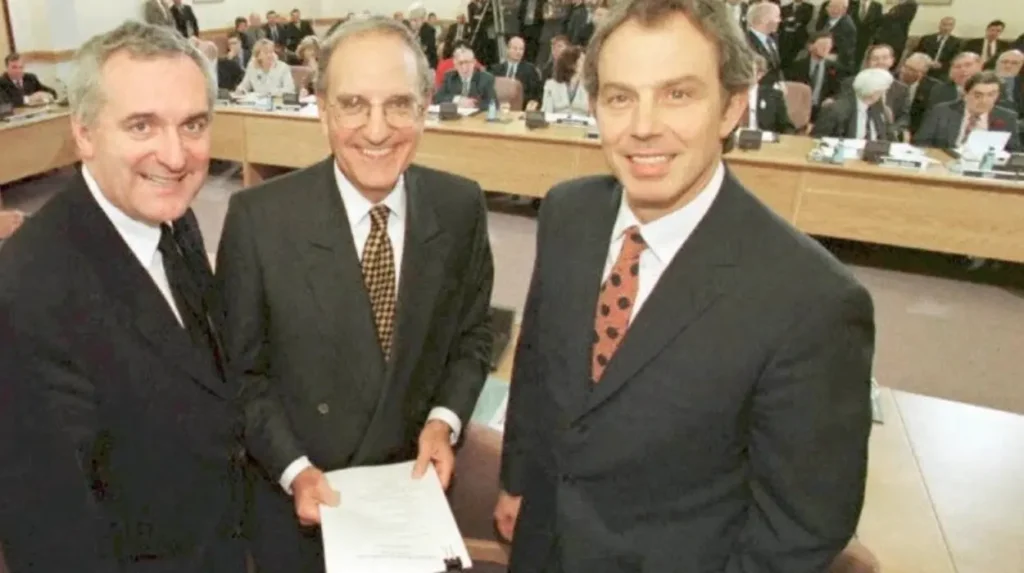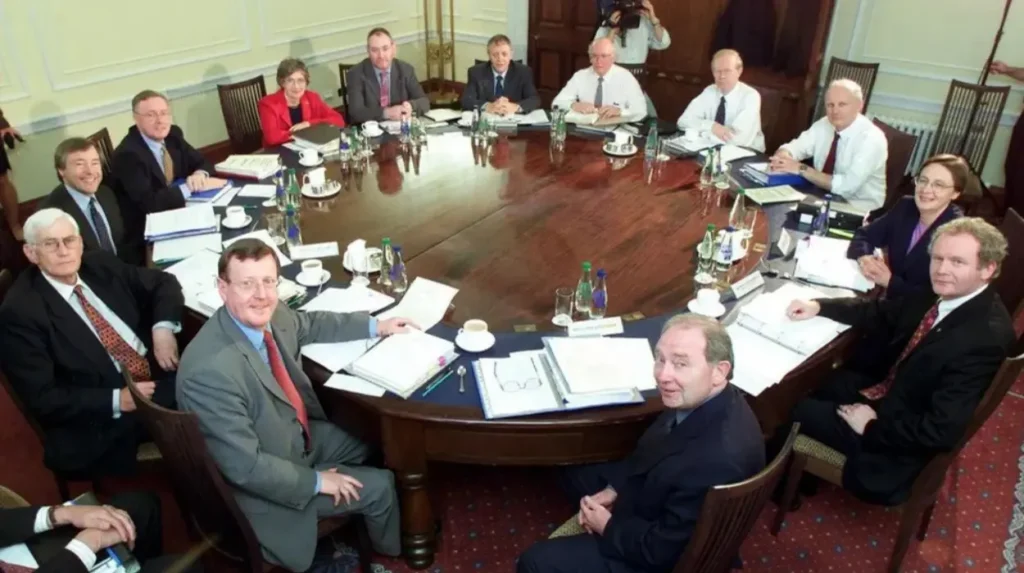One of the most significant treaties signed in the previous two centuries of British and Irish history is the Good Friday Agreement (Belfast Agreement). Signed on April 10, 1998, this agreement marks a major turning point in attempts to stop decades of violence and political strife in Northern Ireland, often known as the Troubles. The agreement brought together fighting countries, battling populations, and warring factions to build a basis for power-sharing, collaboration, and peace. By going over the fundamental facts and historical setting of the agreement, we start to envision how peace was achieved through compromise and negotiation.
The Agreement Itself
Covering many prominent topics of dispute, the Good Friday Agreement was a very thorough and encompassing document. The agreement comprised fields of political power sharing in Northern Ireland, dual recognition of British and Irish identity, disarmament of armed paramilitary organizations, and, possibly most significantly, an arrangement for North-South cooperation and a recognition of consent, therefore guaranteeing majority support from the people for any modification in Northern Ireland’s status.
The creation of fresh political institutions is the most outstanding accomplishment of the agreement to date. Shared authority between nationalists and unionists was to be enabled by a new Northern Ireland Assembly set up to enable local decision-making.
Cross-border organizations were also created as part of the agreement to manage collaboration in the fields of education, health, and trade. These organizations lowered suspicion and offered communities a sense of representation.

Key Facts: The Good Friday Agreement
Major key facts of the Good Friday Agreement are given below:
1. Date of Ratification
The Good Friday Agreement became law on April 10, 1998. Many recall that day as it was Good Friday. Because it was signed on Good Friday, the agreement came to be well-known as a symbol of peace following almost 30 years of conflict. This day was especially important as it marked hope and optimism at a time of year usually connected with reflection and rebirth in the Christian calendar. Many Northern Irish people would come to recall this day as the starting day of a new chapter not characterized by violence but by reconciliation and cooperation.
2. Key parties involved
The parties involved were represented throughout a lengthy and intricate negotiation process by the British and Irish governments, together with just about all the major political parties in Northern Ireland. Unionist and nationalist leaders sat down together in a place where for generations communities have been divided. He played the role of an honest broker, ardently advocating the rights of parties and helping the parties build trust.
His very patient, never-ending approach helps to overcome many political and cultural barriers. And allowing people to have an input in the final deal meant that the deal would be far more accepted and carry far more weight.
3. The Referendum Results
After the agreement was signed, it was put to the public in referendums, which were historic. In Northern Ireland, 71% of voters voted in favor of the deal. In the Republic of Ireland, 94% of voters voted to make constitutional changes that would support the deal. The results of these referendums demonstrated an overwhelming appetite for peace.
They also showed that citizens on both sides of the border were ready to take steps in this direction. The extensive legitimacy and support that the referenda gave to the agreement showed it was really popular and not only done by politicians but also gave an opportunity for ordinary people to agree with this policy. Covidyl arts, these widespread approvals made for a very strong and robust peace process.

4. The Principles
The basic foundation of the agreement would be consent that Northern Ireland continue as part of the United Kingdom unless the people decide. This included the right of people to determine their own future. The agreement also recognized that the people of Northern Ireland had either British or Irish identities.
The agreement rested on the respect for both British and Irish identities to guarantee cultural equality and protect the rights of individuals. For example, it encouraged the idea of power sharing and fairness to ensure that one community could not dominate the other. By embedding these principles explicitly, the agreement provided a level playing field that encouraged trust and collaboration across divided groups.
5. Security and Disarmament
The question of weapons and security was one of the important components. Paramilitary groups on both sides were expected to start disarming. Disarming was considered particularly important, given the perceived lack of trust and the need to end violence and build trust. The British government would also reduce military presence in Northern Ireland as the security situation normalized.
This would allow people to live in a way that was less constantly reminding them of the separated lives people and communities had lived. Although there were a number of issues and delays in the disarmament and demilitarization processes, progress on disarmament and demilitarization was key in restoring a sense of safety and security to communities.
Importance of the Good Friday Agreement
Ending Decades of Violence
The greatest achievement of the Good Friday Agreement and its negotiations was to put an end to the Troubles. It did not erase all tensions, nor was it expected to bring complete peace, but it laid down an all-encompassing framework to drastically reduce violence. For the first time in a generation, families and communities were starting to live in an environment free of the fear of constant bombings.
Power Sharing and Representation
The agreement established a power-sharing model that would effectively prevent the dominance of either community over the other. This was historically significant, and it ensured a share in the political rights of governance for both groups with unionist and nationalist claims. Allowing both communities to have representation and embed fairness into politics aided in trust-building and lessening the exclusion different groups had been confronted with in the past.

A Model for Peace-Building Globally
Peace scholars and practitioners all around the world are studying the Good Friday Agreement and will continue to do so as a template for conflict resolution. Its success with compromise, identity recognition, and diaspora support becomes a series of maps to offer insights for other zones around the globe facing various forms of ethnic or political conflict.
The key construct behind the agreement concerned the notion of consent, in which Northern Ireland would remain a part of the United Kingdom until the people decided otherwise; their right to choose the future for themselves was supported. Negotiators have viewed the agreement as evidence that long-standing conflicts can be addressed through dialogue, whether the reckonings are from South Africa or the Middle East.


